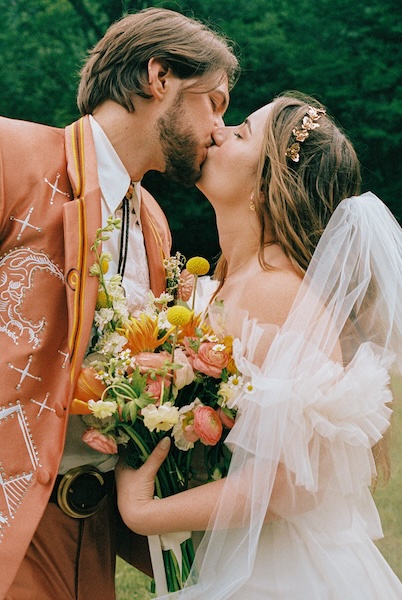Most of Huntington Witherill’s formal photographic education came through participation in workshops. In looking at his inventive fine art work, it’s clear that Witherill has drawn on a plethora of influences and valuable insights from established, well known and respected practitioners of the art.
Working in both color and black and white, his subjects include classic landscapes, studies of pop art, botanical still-life, urban architecture, abstracts and digital imaging. His photographs have been the subject of three award-winning hardcover monographs: Orchestrating Icons (2000), Botanical Dances (2002), and Photo Synthesis (2010). In 1999, Witherill was the recipient of the “Artist of the Year” award presented by the Center for Photographic Art, Carmel, CA. The list of photographers he has studied with reads like a who’s who of photography: Wynn Bullock, Brett Weston, Steve Crouch, Al Weber, Paul Caponigro, Jerry Uelsmann, Imogen Cunningham, Judy Dater, Jack Welpott and Ansel Adams.
“Despite the erroneous, yet popular, perception that anyone can be a photographer, being able to produce meaningful photographs on a reasonably consistent basis does not happen overnight,” Witherill says. “You must be prepared to spend many years and countless hours of diligent and dedicated work if you expect to achieve any sort of mastery of photography. If you are unable to maintain the requisite passion and dedication, you will have little hope of succeeding. As my mentor, Steve Crouch used to say, ‘Endeavor to persevere.’ ”
Like Ansel Adams, Witherill’s first career was in music. Both played the piano. Ansel eventually embraced photography and became a renowned black-and-white landscape photographer. Witherill started piano at four and was a guest soloist with the Santa Monica Symphony Orchestra at 14. “Despite numerous changes that the intervening years have brought to the world of professional photography, I think the advice that I received over 40 years ago still holds true,” he says. “You must be able to maintain patience, passion, persistence and a solid work ethic in order to be successful at your chosen profession. Pablo Casals, the renowned cellist, was quoted as saying, ‘If I had two lifetimes, I could learn to play the cello!’ I feel the very same way about photography. There’s an old tongue-in-cheek adage: ‘If you buy a camera, you are a photographer. If you buy a violin…you own a violin.’ ”
Witherill pursued photography in college and later studied with Adams in a 1970 summer photo workshop in Yosemite, CA, eventually becoming an assistant at some of the workshops. “I think what initially inspired me was remembrances of visual experiences I enjoyed while on family vacations as a child. Nearly every summer, my parents would pile the family into a station wagon and take us on a camping adventure. The extraordinary visual experiences I encountered while exploring the great outdoors during those camping trips was what inspired me to eventually take up photography in 1970.”
Though his first camera was a Brand 17 4 x 5 view camera given to him by a friend, Witherill says, at one time or another, he has probably worked with virtually every type of camera that has been manufactured in the past 150 years. He ventured into digital photography in the early 1990s and currently works with a Canon EOS-1Ds Mark III. His education since that time has been mainly self-taught. “During the early days of digital photography there were few photographers who had the practical experience and necessary expertise to teach the nuances involved with what was then new and uncharted territory,” he says. “Suffice it to say, one was pretty much on their own in the early days of digital and that meant much trial and error.”
He switches cameras with astonishing frequency because he has always thought of cameras as being a means to an end. He believes that one’s vision and imagination are at the heart of making great photographs, and the specific tools used to facilitate that vision are of peripheral concern. “In my opinion, the creative results of any photographic process can only be measured and compared through the filter of one’s personal aesthetic choices and judgments,” Witherill says. “Unfortunately, those qualifications can never be truly or fairly quantified.
When it comes to art, subjectivity will always reign supreme. Thankfully, individual preferences for one type of photographic process over another and the subjective nature of those choices remain the very source from which art derives one of its most beneficial pleasures.”
Witherill’s specific digital workflow varies depending upon the particular type of image source he is working with. Some of his photographs originate as large format film negatives that are processed and printed as silver gelatin prints in a conventional darkroom. When he first began digital photography he started producing silver gelatin prints using a “hybrid” process that used conventional and digital tools, and involved a three-step process: Scanning the original film negative; fine-tuning the digital scan (dodging, burning, etc.) in Photoshop to produce a digitally-generated film inter-negative (using an Agfa imagesetter); and contact printing the film inter-negative in a conventional darkroom, using traditional (chemical-based) printing techniques and resulting in silver gelatin contact prints up to 20 x 24-inches in size.
However, Witherill discontinued producing silver gelatin prints altogether in 2005. Since then, his working process has been strictly digital. Currently, he uses Photoshop’s CS4 and Lightroom 2 software. He makes limited edition archival pigment ink prints using an Epson Stylus Pro 7800 printer with Ultrachrome K3 inks. His paper of choice is Hahnemühle PhotoRag Bright White (GSM 309) for both color and black-and-white prints.
“I consciously try my best not to compare the creative results of traditional versus digital photography. Both approaches have their strengths and weaknesses, and at the same time, both have decidedly unique, admirable and uncompromising qualities that are deserving of no apology and/or excuse. Comparing the two approaches is a bit like comparing apples and oranges. It really boils down to a matter of personal preference.”
His latest project recently culminated in the publication of a hardcover monograph featuring digital-based color images from a series titled Photo Synthesis.
Photo Synthesis itself is the result of a project that began in 2002. The series centers upon botanical subjects that have been digitally transformed into an array of fantasy-based illusions and altered perceptions. This series effectively portrays an abstract, intuitive and spontaneous approach to the subject, even evoking musical qualities.
“I believe that we are currently living in one of the most exciting and opportune times in the history of photography,” Witherill says. “The potential for artistic growth in the medium has never been greater. As photographers, we are indeed lucky to be involved in the medium at such a fortuitous moment in its history. I can’t say for certain exactly where photography is headed. The fact that the art is now assured of tremendous growth and change in the coming years is to be both cherished and celebrated.”
To find out more about Huntington Witherill’s fine art photography, workshops, and portfolios please visit his comprehensive gallery and Web site at www.huntingtonwitherill.com.
Paul Slaughter is a world-traveled photographer and writer, residing in Santa Fe, New Mexico. Paul specializes in location and fine art photography. An avid jazz lover, he has an extensive photographic collection of the jazz greats. His book of classic jazz greats, Paul Slaughter / Jazz Photographs 1969 -2010, has been published. You can view portfolios of Paul’s work at www.slaughterphoto.com.





